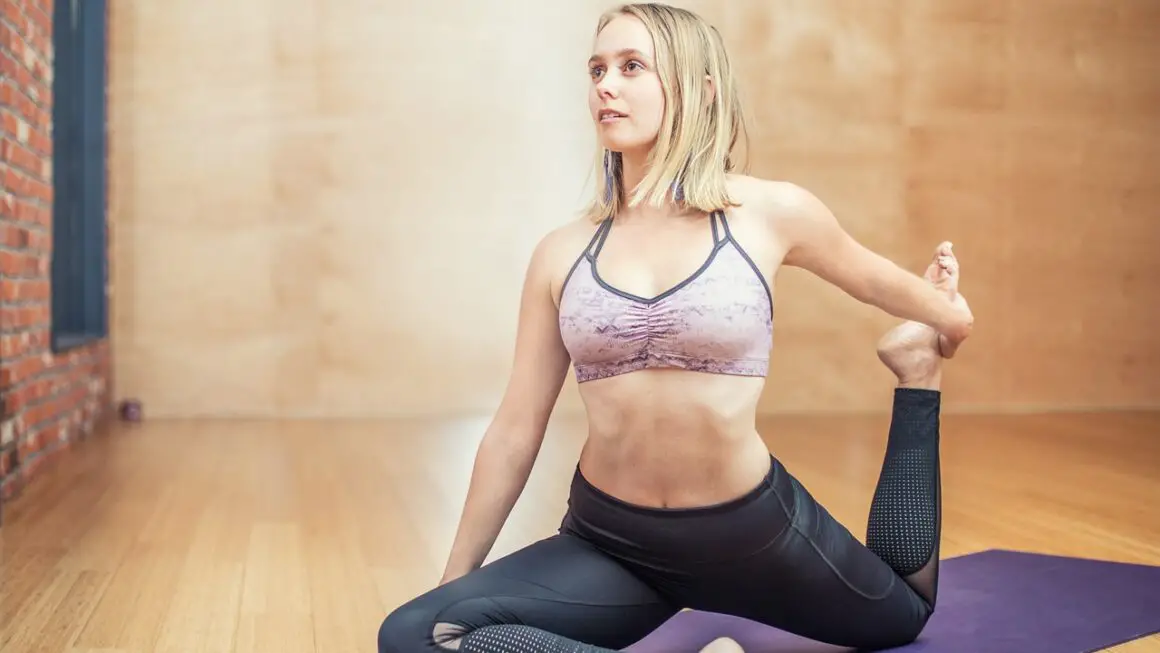Feeling sluggish? Energy levels in the tank? Perhaps you’re simply looking to boost your overall well-being. The answer might be simpler than you think: exercise. Engaging in regular physical activity is one of the most potent tools we have for enhancing both our physical and mental health. This comprehensive guide explores the multifaceted benefits of exercise and provides practical tips on how to incorporate it seamlessly into your life.
The Wide-Ranging Benefits of Exercise
Exercise isn’t just about fitting into your favorite jeans; it’s a cornerstone of a healthy and fulfilling life. The benefits extend far beyond aesthetics, impacting everything from your cardiovascular health to your cognitive function.
Physical Health Improvements
Engaging in regular exercise has a profound impact on various aspects of your physical health.
- Cardiovascular Health: Exercise strengthens your heart muscle, improves blood circulation, lowers blood pressure, and reduces the risk of heart disease. A study published in the Journal of the American College of Cardiology found that even small amounts of physical activity can significantly reduce cardiovascular risk.
- Weight Management: Exercise helps you burn calories, build muscle mass, and boost your metabolism, making it easier to maintain a healthy weight. Combining exercise with a balanced diet is the most effective approach. For example, a brisk 30-minute walk can burn around 150-200 calories.
- Stronger Bones and Muscles: Weight-bearing exercises, such as walking, running, and strength training, help build and maintain strong bones and muscles. This is particularly important as we age to prevent osteoporosis and sarcopenia (muscle loss).
- Reduced Risk of Chronic Diseases: Regular exercise can lower your risk of developing type 2 diabetes, certain types of cancer (colon, breast, endometrial), and metabolic syndrome. The Centers for Disease Control and Prevention (CDC) recommends at least 150 minutes of moderate-intensity aerobic activity or 75 minutes of vigorous-intensity aerobic activity per week.
Mental and Emotional Well-being
The positive effects of exercise aren’t confined to your physical health; they extend to your mental and emotional well-being too.
- Mood Enhancement: Exercise releases endorphins, which have mood-boosting effects and can help reduce feelings of anxiety and depression. A simple 20-minute walk in nature can significantly improve your mood.
- Stress Reduction: Physical activity helps to lower stress hormones like cortisol and adrenaline, promoting relaxation and a sense of calm. Try yoga, tai chi, or a gentle stretching routine to unwind.
- Improved Sleep: Regular exercise can improve the quality and duration of your sleep. Just avoid vigorous workouts close to bedtime, as they can have the opposite effect.
- Increased Self-Esteem: Achieving fitness goals, no matter how small, can boost your confidence and self-esteem. Celebrate your progress and acknowledge your efforts.
Types of Exercise: Finding What Works for You
The beauty of exercise is that there’s something for everyone. Exploring different types of exercise can help you find activities you genuinely enjoy, making it easier to stick to a consistent routine.
Aerobic Exercise
Aerobic exercise, also known as cardio, involves continuous rhythmic movements that increase your heart rate and breathing.
- Examples:
Walking: A simple, accessible, and low-impact option.
Running: More intense than walking, offering a greater cardiovascular challenge.
Swimming: Gentle on the joints and provides a full-body workout.
Cycling: Great for building leg strength and endurance.
Dancing: A fun and social way to get your heart pumping.
- Benefits: Improves cardiovascular health, burns calories, and increases endurance.
Strength Training
Strength training involves using resistance to build muscle mass and strength.
- Examples:
Weightlifting: Using dumbbells, barbells, or weight machines.
Bodyweight exercises: Push-ups, squats, lunges, planks.
Resistance bands: Versatile and portable, offering a wide range of exercises.
- Benefits: Builds muscle mass, increases bone density, improves metabolism, and enhances strength.
Flexibility and Balance Exercises
These types of exercises focus on improving your range of motion, flexibility, and balance.
- Examples:
Stretching: Holding poses to lengthen muscles and improve flexibility.
Yoga: Combines physical postures, breathing techniques, and meditation.
Pilates: Focuses on core strength, flexibility, and body awareness.
Tai Chi: A gentle, flowing form of exercise that improves balance and coordination.
- Benefits: Improves flexibility, range of motion, balance, and reduces the risk of injury.
Creating a Sustainable Exercise Routine
Starting an exercise routine can seem daunting, but breaking it down into manageable steps can make it much easier.
Setting Realistic Goals
- Start small: Begin with 10-15 minutes of exercise a few times a week and gradually increase the duration and intensity as you get fitter.
- Be specific: Instead of saying “I want to exercise more,” set a specific goal like “I will walk for 30 minutes three times a week.”
- Make it achievable: Choose goals that are realistic for your current fitness level and lifestyle.
- Track your progress: Keeping a record of your workouts can help you stay motivated and see how far you’ve come.
Finding Time for Exercise
- Schedule it: Treat exercise like any other important appointment and block off time in your calendar.
- Make it convenient: Choose activities that are easily accessible, such as walking in your neighborhood or using a home workout app.
- Multitask: Combine exercise with other activities, such as listening to a podcast while walking or doing squats while watching TV.
- Break it up: If you don’t have time for a long workout, break it up into shorter bursts throughout the day.
Staying Motivated
- Find an exercise buddy: Working out with a friend can make exercise more enjoyable and help you stay accountable.
- Reward yourself: Set small rewards for reaching your goals, such as a new workout outfit or a relaxing massage.
- Vary your routine: Prevent boredom by trying new activities and switching up your workouts regularly.
- Listen to your body: Don’t push yourself too hard, especially when you’re just starting out. Rest and recover when needed.
Nutrition and Hydration for Optimal Performance
Exercise is just one piece of the puzzle; nutrition and hydration play equally important roles in supporting your fitness goals.
Fueling Your Body
- Balanced Diet: Focus on eating a variety of whole, unprocessed foods, including fruits, vegetables, lean protein, and whole grains.
- Pre-Workout Nutrition: Consume a light snack or meal containing carbohydrates and protein about 1-2 hours before exercising. Examples include:
A banana with peanut butter
A handful of almonds and a piece of fruit
Oatmeal with berries
- Post-Workout Nutrition: Replenish your energy stores and repair muscle tissue by consuming a meal or snack containing carbohydrates and protein within 30-60 minutes after exercising. Examples include:
A protein shake
Grilled chicken with sweet potatoes
Greek yogurt with fruit and granola
Staying Hydrated
- Drink Plenty of Water: Dehydration can negatively impact your performance and recovery. Drink water before, during, and after exercise.
- Electrolyte Drinks: For longer or more intense workouts, consider consuming an electrolyte drink to replace lost sodium, potassium, and other minerals.
- Monitor Your Urine: Pay attention to the color of your urine. Pale yellow indicates adequate hydration, while dark yellow suggests dehydration.
Exercise Safety: Preventing Injuries
Prioritizing safety is crucial to avoid injuries and ensure a positive exercise experience.
Warm-Up and Cool-Down
- Warm-Up: Prepare your muscles for exercise by performing dynamic stretches and light cardio for 5-10 minutes before each workout. Examples include arm circles, leg swings, and torso twists.
- Cool-Down: Gradually decrease your heart rate and breathing by performing static stretches for 5-10 minutes after each workout. Hold each stretch for 20-30 seconds.
Proper Form and Technique
- Learn Correct Form: Whether you’re lifting weights or performing bodyweight exercises, it’s essential to use proper form to avoid injuries. Consider working with a certified personal trainer to learn proper technique.
- Start Slow: Begin with lighter weights or lower intensity exercises and gradually increase the challenge as you get stronger.
- Listen to Your Body: If you experience pain, stop the exercise and consult with a healthcare professional.
Choosing the Right Equipment
- Wear Appropriate Shoes: Invest in comfortable and supportive shoes that are designed for your chosen activity.
- Use Properly Fitted Equipment: Ensure that your exercise equipment, such as bikes or helmets, fits properly to prevent injuries.
- Maintain Your Equipment: Regularly inspect and maintain your exercise equipment to ensure it is in good working condition.
Conclusion
Exercise is an indispensable component of a healthy lifestyle, offering a plethora of physical, mental, and emotional benefits. By incorporating regular physical activity into your routine, you can improve your cardiovascular health, manage your weight, boost your mood, and reduce your risk of chronic diseases. Remember to start slowly, find activities you enjoy, and prioritize safety to ensure a sustainable and rewarding exercise journey. Make exercise a priority, and you’ll reap the rewards for years to come.




